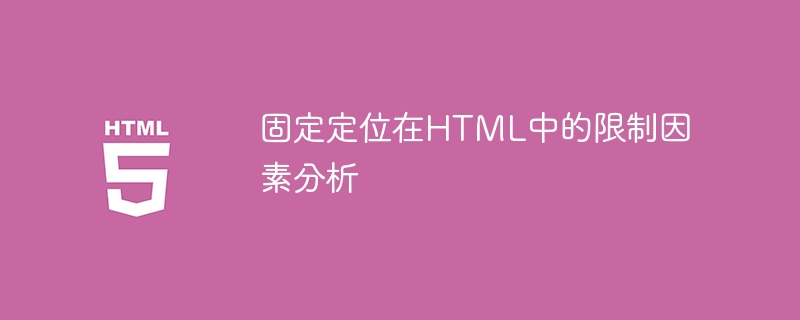

Analysis of limiting factors of fixed positioning in HTML requires specific code examples
Introduction:
In Web development, fixed positioning is a commonly used layout This way, it can make the element have a fixed position relative to the browser window and not change as the scroll bar scrolls. However, in actual use, we may encounter some limitations that plague fixed positioning. This article will analyze some of the limitations of fixed positioning in HTML and provide specific code examples.
1. Settings of element containers
In actual use, we often need to fixedly position elements within a container. At this time, we need to pay attention to the following points:
Sample code:
In the above sample code, the positioning method of the .container container is set to relative positioning, and the .fixed-element element uses the fixed positioning method to realize the positioning of the container. Fixed positioning effect within.
Sample code:
In the above sample code, the size of the .container container is set to 300px × 300px, and the overflow style (overflow: auto) is set. When the container is When the content exceeds the size of the container, scroll bars will appear.
2. Positioning reference
The reference of a fixed positioning element is the browser window or the nearest parent element with positioning mode (non-static). In actual use, we need to pay attention to the following points:
Sample code:
In the above sample code, the positioning mode of the .fixed-element element is set to fixed, which achieves a fixed positioning effect relative to the browser window.
Sample code:
In the above sample code, the positioning method of the .inner-container parent element is set to relative positioning, and the width and height are set at the same time, achieving relative positioning. Fixed positioning effect of the parent element.
Summary:
Through the above analysis of the limiting factors of fixed positioning in HTML, we have learned that when using fixed positioning, we need to pay attention to the setting of the element container and the setting of the positioning reference. Only when the container and positioning reference are set correctly can the effect of fixed positioning be achieved. In actual development, we should make settings according to specific needs and actual conditions, and make reasonable adjustments to the settings of containers and positioning references.
The above is the detailed content of Limiting factor analysis: limiting factors of fixed positioning in HTML. For more information, please follow other related articles on the PHP Chinese website!